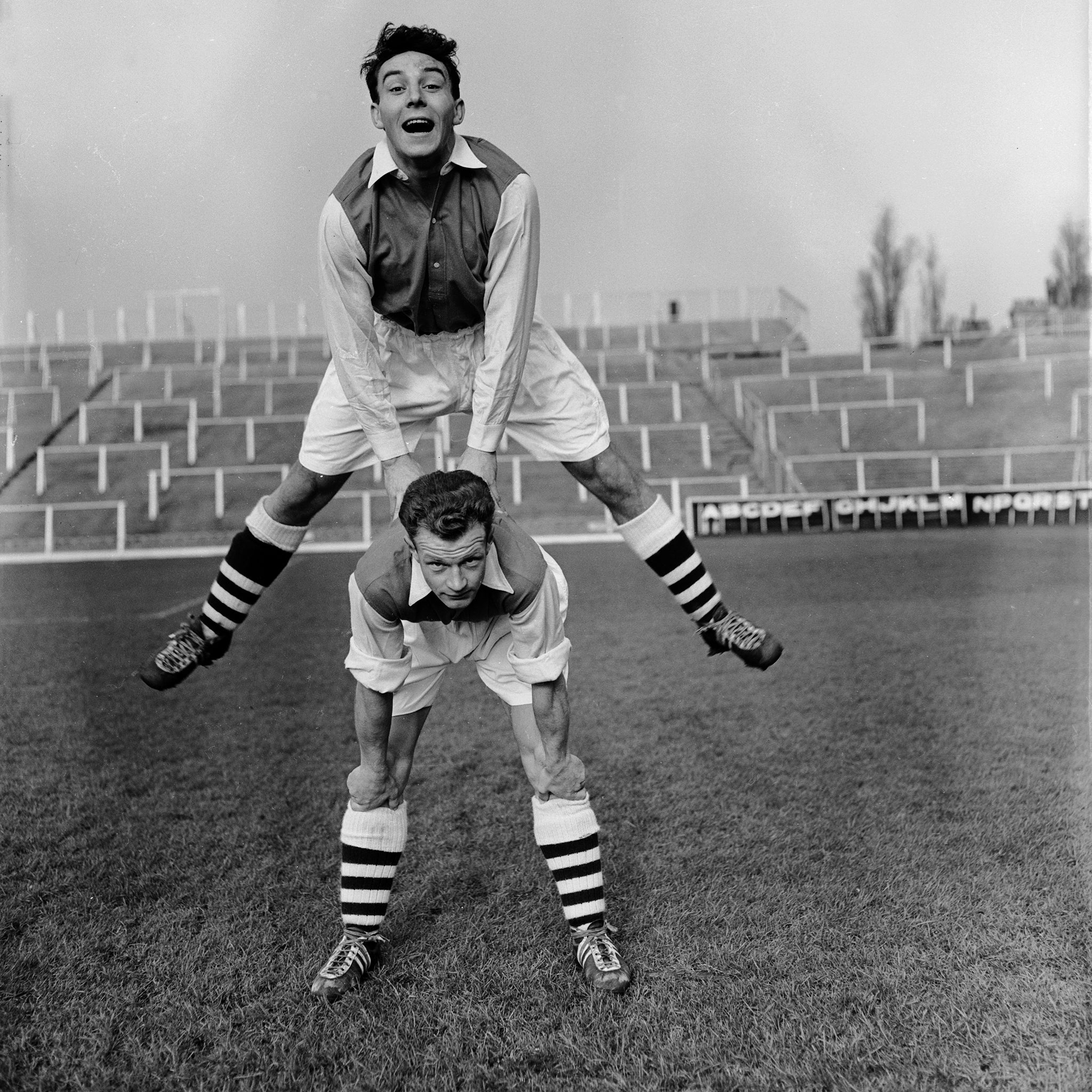Vic Groves: Never-say-die midfielder who won Arsenal captaincy and the esteem of the Highbury faithful
Unusually for a Gunner, Groves had made his League entrance for local rivals Tottenham Hotspur

Effervescent Eastender Vic Groves was a colourful character who gave Arsenal fans something to smile about during the late 1950s and early 1960s, a period of unexpected mediocrity for a club accustomed to jousting for the game’s glittering prizes.
Whether contributing goals as a buoyant young centre-forward or stabilising the midfield as a mature wing-half and captain, the former eel-skinner radiated an infectious, never-say-die enthusiasm for his work that endeared him to Highbury regulars.
Unusually for a Gunner, Groves had made his League entrance for local rivals Tottenham Hotspur, who had recruited him as an amateur from Leytonstone in June 1952. He made four league starts for Spurs, before leaving for another unpaid billet, this time with Walthamstow Avenue.
Clearly, though, Groves was of professional calibre – and in October 1954 he joined Leyton Orient of the Third Division South. He thrived at Brisbane Road to the tune of 25 goals in 44 appearances before moving to Arsenal in November 1955 in a £30,000 transaction in which doughty full-back Stan Charlton accounted for £7,000 of the fee, and rising star Groves the rest.
Groves had recently been deployed on the right flank for England B and had also attracted a handsome offer from Wolverhampton Wanderers. However, he rejected a switch to the Black Country, and netted smartly on his debut at home for the Gunners against Sheffield United, only for a sequence of niggling injuries to culminate in a cartilage operation in the summer of 1956.
He bounced back in 1957-58 to showcase his ball skills, power in the air and his eye for goal. Never a speed merchant, he made up for that by quickness of thought, which created countless scoring opportunities for the prolific David Herd.
Having already recognised Groves’ leadership qualities by making him captain, and noting his immense contribution to the side’s third-place finish in the 1958-59 title race, manager George Swindin acted on his hunch that the Londoner’s impressive all-round attributes and unquenchable appetite for the fray suited him to a midfield role. Thus Groves was converted to a wing-half and became more influential than ever.
Yet the Arsenal team slumped back to mid-table and, as he approached his thirties in 1962, Groves lost impetus. His Highbury situation was not improved by the replacement of Swindin by former England skipper Billy Wright, who was looking to build a bright new side. Groves receded to the periphery of the squad.
In May 1964, having made more than 200 appearances and scored 37 goals as a Gunner, Groves was given a free transfer by Wright, and he joined non-league Canterbury City. He retired from the game in 1965.
His nephew, Perry Groves, played for Arsenal between 1986 and 1992, helping to win two League titles and the League Cup during the era of George Graham.
Victor George Groves, footballer: born Stepney, London 5 November 1932; died 24 January 2015.
Join our commenting forum
Join thought-provoking conversations, follow other Independent readers and see their replies
Comments